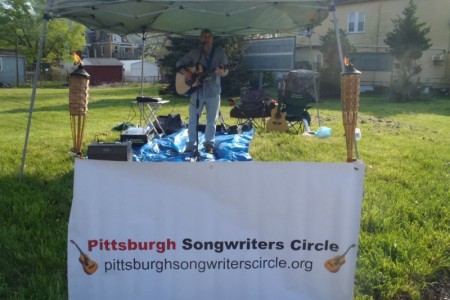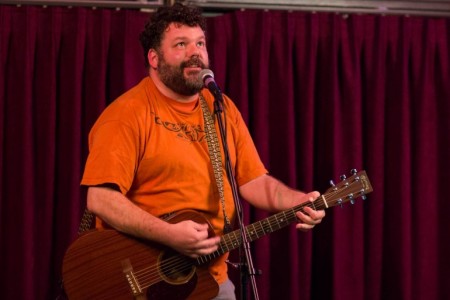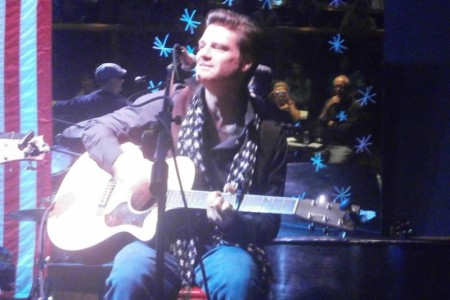JUNE 2018 Newsletter
Minutes from 2018-05-05 PSC meeting…
We had a robust gathering of 15 or so songwriters tonight, including two new members and longtime friend Sue Gartland. Most of the offerings were songs of summer (the assignment) or songs that you would play at a summer dance, as well as a few lost loves, a spiritual train song, and a fun political song that reminded me of Cheryl Wheeler. The summer songs ranged from celebratory to wistful to bluesy to downright depressing, and the styles from Joan Baez and Johnny Cash to Greenday and the Carter Family. It was a great night of music; there’s a lot you can do with summer!
Conversation was lively and supportive with many good suggestions, and the session went on until after 9pm. That was a good thing, because our featured performer Carrie Collins called in sick, and the house called off the acoustic open mic completely! At the end Sue got a group picture of everyone for our facebook page, https://www.facebook.com/PittsbughSongwritersCircle/. After that the group broke up into many friendly conversations, and a good time was had by all.
We couldn’t decide among several suggestions for a songwriting assignment for next time, so we decided each songwriter could choose among these three:
Write a song about July (thanks Matches!)
Write a song with the chord sequence C – Am – F – G (or those chord shapes using a capo, or if you are into chord numbers, use the sequence 1 6 4 5 in whatever key works for you) somewhere in the song; let’s see how different the songs turn out (thank, Paul E!).
Write a “crooked” song, or modify a song that you have already written to make it crooked (thanks BJ!).
What is a “crooked” song? Most songs have a steady rhythm or sequence of beats, like 1234, 1234, 1234, …, or 123, 123, 123, …, or 12, 12,12, … for the whole song – in these examples, each group of 2, 3 or 4 beats is called a “measure”. A “crooked” song deliberately throws in an extra beat or two (or more!) once in a while, or drops a beat (or more!), so not all the measures have the same number of beats. Another way to make a crooked song is to keep the same number of beats for all measures, but change the number of measures for different parts of the song, so perhaps the first three lines of a verse have four measures each, but the last line only has 3 measures (or maybe has 5 measures).
Examples of popular songs that are crooked in the first sense (not all measures have the same number of beats) can be seen at http://theeviljam.co.uk/2014/07/31/famous-songs-in-slightly-odd-time-signatures-a-guide-to-rhythms/ or https://www.joytunes.com/blog/learn-to-play/odd-time-signature-examples-musicians-love/… For example, a wild example is the Beatles “Happiness is a Warm Gun”, and a more tame example is Burt Bacharach’s “I Say A Little Prayer” (made famous by Aretha Franklin).
Examples of popular songs that are crooked in the second sense (not all parts have the same number of measures) can be seen at https://www.quora.com/Which-popular-songs-have-musical-phrases-of-non-standard-length. For example, Michael Jackson’s “Thriller” and Maria Muldaur’s “Midnight at the Oasis”, or the Beatles “Lucy In The Sky With Diamonds.”
You can find lots of crooked traditional, folk and dance tunes by googling “crooked tunes”, too!
Extra points if you use two of these ideas (July, C-Am-F-G, and crooked), and super-bonus points (including, possibly, a handshake from Matches!) if you use all three!




